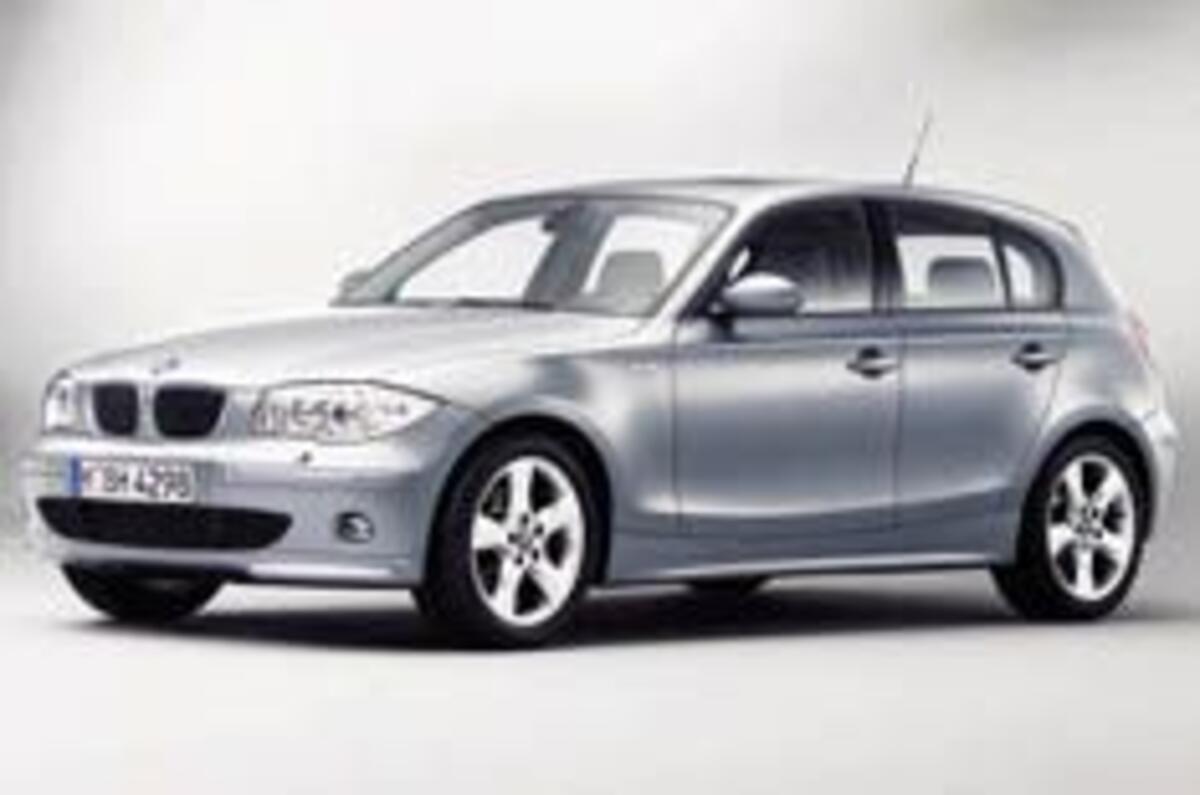When BMW announced the sale of Rover on Friday, 17 March 2000, it also revealed hastily drawn up plans for a new small, sporting BMW hatchback positioned between the Mini and the BMW 3-series Compact. The crucially important new 1-series you see here is that car.
The new BMW 1-series, to go on sale simultaneously in the UK and left-hand-drive Europe in September priced from £15,630, pitches BMW into the most competitive car segment of all. It is the key to BMW’s ambition of expanding total sales to 1.4 million cars – including Mini and Rolls-Royce – by 2008.To guarantee the One remains true to BMW’s ‘ultimate driver’s car’ philosophy, the new hatchback ignores the universal small-car layout of transverse front engine driving the front wheels. Instead, it opts for BMW’s traditional longitudinal front engine driving the rear wheels. Given the resulting space limitations, many will see this as a massive gamble.
BMW is unconcerned. Munich has no intention of competing head-on in terms of value for money or sales volumes with the Focus and Golf. By pegging production at around 150,000 a year, BMW wants to position the 1-series as the premium model in the class. Management seems happy to cop criticism of the car’s packaging restrictions, because they know the 1-series drives like no other small car.The One will sire a whole family of models. At least two years after the five-door hatch, BMW plans to add a range of variants, including a 2-series coupé and convertible, 1-series saloon, estate and possibly a roadster. Performance versions are also in the pipeline, but any M1/M2 version is at least three years into the future.
Design
Remember the CS1 concept car, pictured right, and unveiled at the 2002 Geneva show? The 1-series is the hatchback of that convertible. Its appearance is just as controversial and sure to stir debate.
Styled by American Chris Chapman, under the leadership of Chris Bangle, the One persists with the complex surfaces that are now a BMW trademark. Abutting concave and convex surfaces flow from the hard upper and lower lines of the door, bonnet and tailgate shut-lines, and from the curved sills, to create an organically intricate surface treatment.In profile, the proportions of the nose are pure BMW, with an ultra-short front overhang and a long flat bonnet, created by pushing the windscreen to the rear. It could barely be more different from the modern hatchback norm with its sloping bonnet and long overhangs. The glasshouse, however, is contemporary Euro-hatch and, from the rear, not unlike the new Astra.A 0.29 Cd is good, if not outstanding. Thick C-pillars and an extremely shallow back screen mean rearward visibility is poor.At 2660mm, the 1-series’ wheelbase is 65mm shorter than the 3-series saloon and Compact, but 80mm longer than the new Volkswagen Golf. Overall length is 4236mm, just 26mm shy of the Compact, yet 235mm shorter than the 3-series saloon. Its 1430mm height makes it slightly taller than the Compact, the 1750mm width identical.






Add your comment